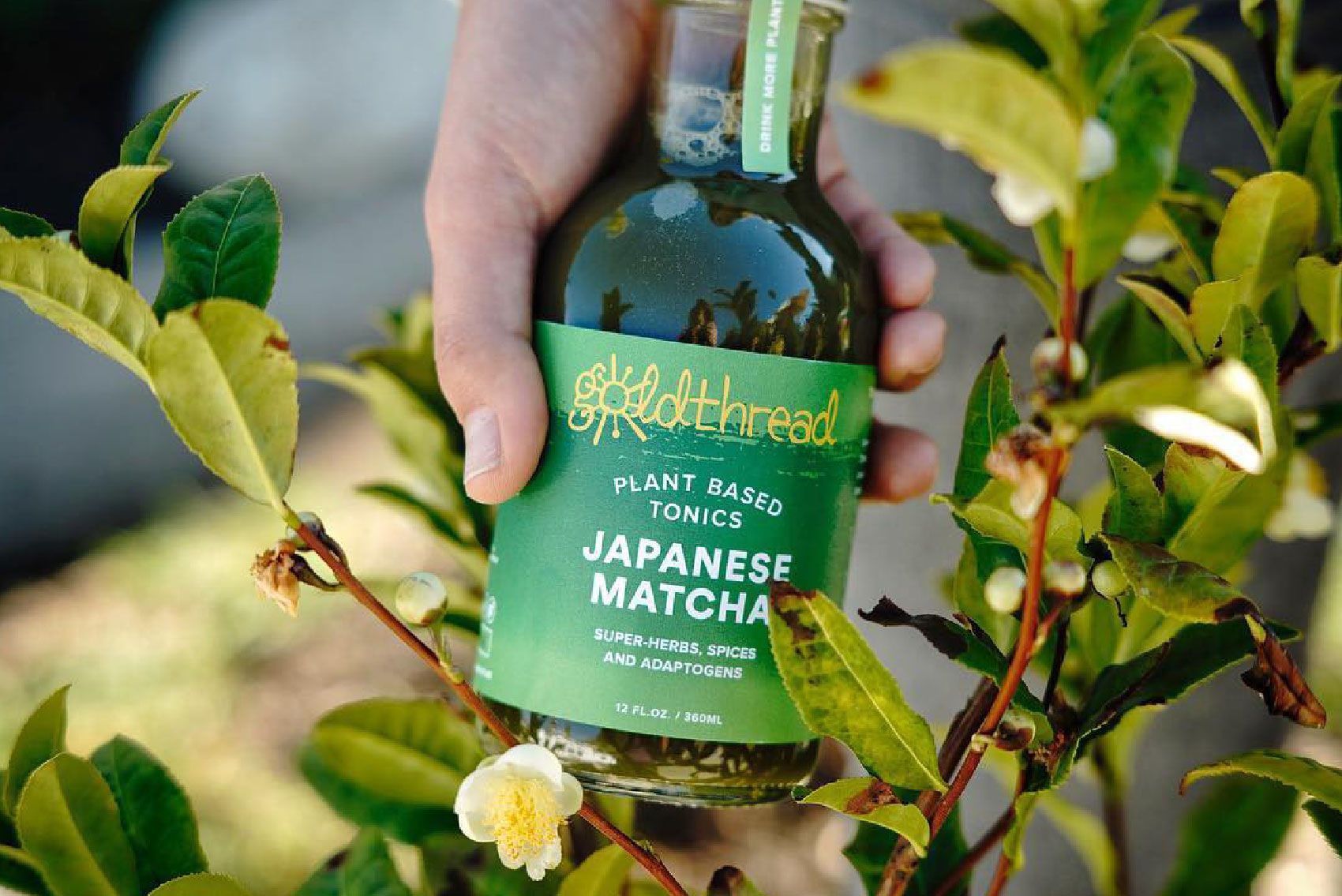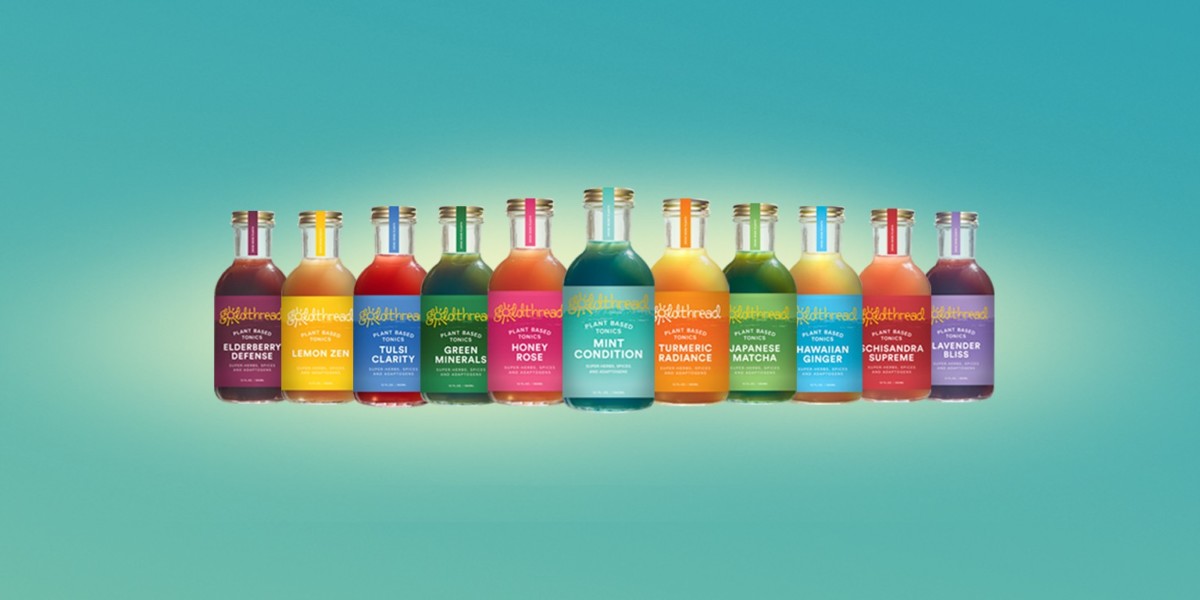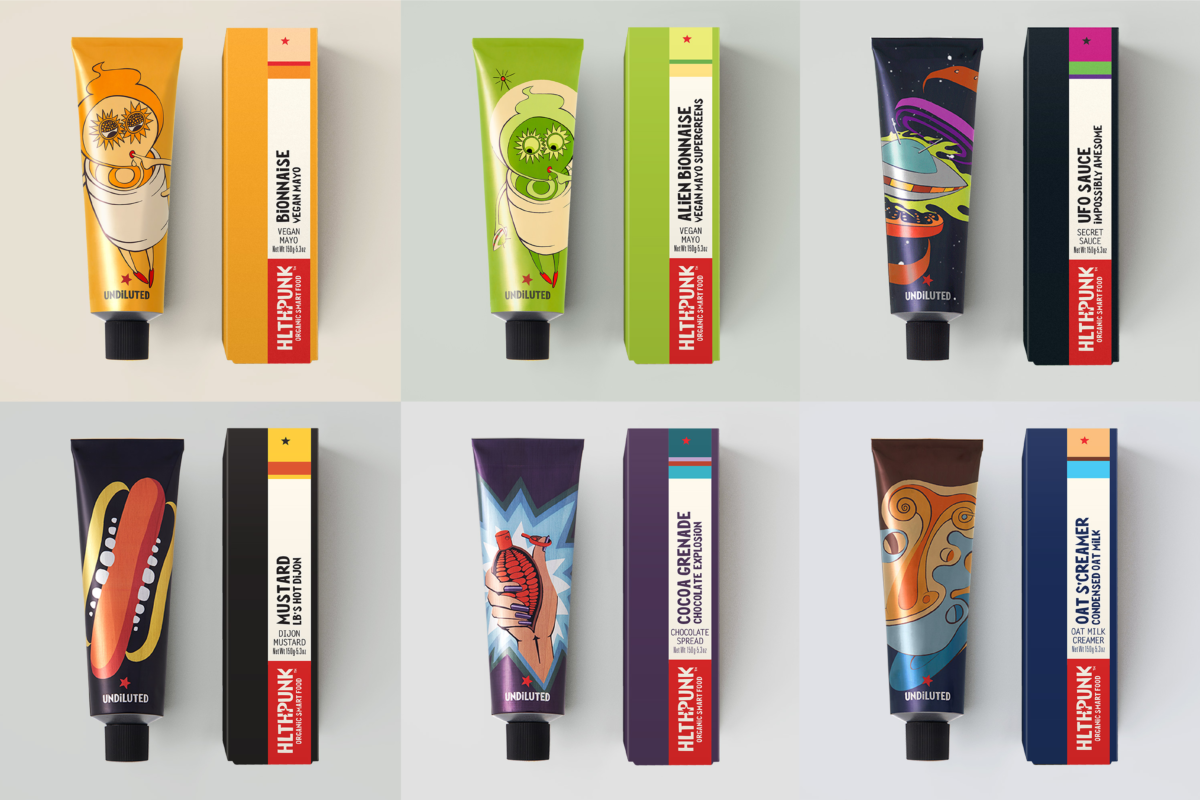
How Clean and Sustainable Are You, Really?
Goldthread and HLTHPUNK are dedicated to creating sustainable and clean products, but does your brand go to their lengths?
It’s a new year, time to create a new you — a you that is healthy, focused, refreshed and so on. As the world and our lives have become faster-paced and more complicated, we find ourselves in need of simplification, whether that be through our careers, time with family, or our diets.
As human needs evolve, so do the products we consume. We interviewed two emerging brands, Goldthread and HLTHPUNK, who are dedicated to the mission to bring food and beverages back to their roots. Read on to learn more about their thoughts on the trend and what it really takes to market their products as sustainable and clean. Speaking of “roots,” let’s take a step back to learn the real definitions of these claims. The Nielsen Company provides a useful chart from their 2017 study on transparency in labeling. Obviously, claiming these terms on a consumer packaged good and being approved by the Food and Drug Administration (FDA) is much more complex, but it provides a convenient highlight.

Goldthread
William Siff is Goldthread’s founder and formulator. As a plant-based tonic seller on the rise in the market, we wanted to learn more about his methods, how he manages to stay true to clean and sustainable, and his predictions for future products doing the same.
With ingredients that sound more appropriate for a potion from Hogwarts, Siff has done extensive research on ways to use most of Earth’s creations. He has also managed to bring them into mainstream markets by backing up the research with real health effects and authenticity.

Being a plant-based tonic, what are the trending ingredients you plan to add to the mix? Is this Goldthread specific, or have you seen it in other products too?
When I first launched Goldthread, I made sure to develop a tonic that highlighted the power of Schisandra while incorporating goji berry, ginger root, spearmint, rose petals, orange peel, tulsi leaf, Korean ginseng and cardamom pods.
For me, it’s all about developing tonic varieties that include powerful and functional ingredients. Each of our tonics has a purpose & benefit while also tasting delicious and refreshing. Schisandra Berries, which I anticipate will be trending in the near future, have been an adaptogenic super fruit staple in Asian medicine for centuries and have the advantage of also tasting good. Packed with antioxidants, Schisandra is easy to blend into a variety of different flavors while being agreeable to the body. It’s also great for various body systems such as cognitive focus and the liver.
With the boom of tonics and kombuchas, how do you find small to midsize farmers are affected? Has it been positive or not affected as much as you’d think?
A huge part of Goldthread is centered around our sourcing. Since the beginning, we’ve traveled the world to source herbs from the regions where they are most potent and have cultivated direct-trade relationships with local farmers. Overall, we’ve found that this has a positive impact on small to midsize farmers who otherwise might not be able to sustain themselves economically the way they have for decades.
There is a high potency of herbs in all of our drinks — and many of the plants we use aren’t readily consumed in any other way. By sharing the power of these plants in this mass-marketed way, we’re able to help our growers. Normally the growers would have bagged up the plants, weighed them by the ounce and sold small increments to make a living. What we’re doing is buying it by the ton, so ultimately it simplifies their work in a lot of ways, which allows them to do what they do best — farm. And it might seem obvious, but the more of a demand we create, the more they grow. It’s been inspiring to see these efforts encourage younger generations to get involved and have the desire to take over their family farms. At Goldthread, we’re proud to operate in a way that makes the most sustained & positive impact on the growers and producers of these plants and look forward to seeing these sorts of practices continue to span across the industry as a whole.
Do you find that mainstream grocery stores are showing more interest?
Absolutely. Although, the conventional grocers definitely moved faster than we anticipated. We had a strategy of starting with a focus on the natural/specialty channel. With conventional adapting quickly to the trends, we’ve shifted our strategy to accommodate the demand and are now selling into conventional just as fast as we’re selling into natural and specialty. This, of course, is driven by customer demand which in turn means the conversation around health & wellbeing is hitting across all levels of society… I’m definitely psyched about that.
What’s your personal favorite healthy trend in the CPG industry? (Goldthread or non-Goldthread)
Besides what we’re doing here at Goldthread — helping people incorporate more plants into their daily lives, I’d have to say the probiotic category as a whole is very much alive. From kombucha to kefir, I love the fact that people can infuse their bodies with probiotics in such an easy and available way. Gut health and our microbiome have finally risen to paramount importance, as it always should have been. People are starting to recognize that maintaining our gut health aids in keeping inflammation down and promotes good health overall.
HLTHPUNK
During our interview with Richard Lassalle on his product, Entube, he started to give us a peek into another innovative line of superfood in a tube – HLTHPUNK. As it recently launched, and his knowledge and passion for vegan, clean and sustainable products were so extensive, we felt inclined to follow up with Lassalle.

What are the biggest trends you’ve seen in clean or organic CPG products?
The biggest trend right now is the accelerating consumer awareness that food can be your medicine.
The sun is setting on the perceived need to take dietary supplements when good clean and vegan products are starting to populate the grocery stores.
How careful do you need to be with labeling or marketing language?
We have to comply with the FDA food labeling standards, whilst the FDA is generally a decade behind the market, and consumer needs still have to comply. Marketing, on the other hand, is the wild west and super fun to boot. We can be adventurous and totally push the envelope with the messaging. The ultimate key, however, is authenticity. It’s the primary driver in creating respect for a brand.
What’s your personal favorite healthy trend in the CPG industry?
Keeping it close to the earth and not over-processing, understanding that there’s really no need for all the various gums and additives that most product developers use only because they always have. We challenge this big time and will continue to do so. Fiber is going to be super hot in 2020, as a healthy gut is the key to a healthy life.
FOUNDING PRINCIPLES
As established brands find themselves stepping back and searching for ways to produce a clean and/or sustainable product, it’s going to take more than just a change in production and labeling. It’s a change in mindset and action.
Consumer awareness is skyrocketing, and they can tell which companies are authentic versus “talking the talk.” New up-and-coming brands are taking advantage of this. From day one, they are “walking the walk” by providing real nutrients and promoting practices, such as regenerative and Biodynamic agriculture. The small companies center everything around the clean and sustainable mission, and consumers are stepping in line to support them. It will be interesting to see the escalation in the upcoming years and how bigger brands will adjust from the days of artificial.

